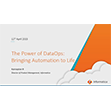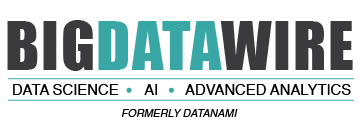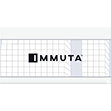
Grafana Labs Unveils 2025 Observability Survey Findings and Open Source Updates at KubeCon Europe
LONDON, March 25, 2025 — Grafana Labs today announced the results of its annual Observability Survey alongside significant advancements to its cloud native ecosystem that help users get the most from open source technologies, including Kubernetes and OpenTelemetry.
 These announcements underscore Grafana Labs’ ongoing commitment to the open source community and addressing the evolving needs of platform engineering teams. Learn more at Grafana Labs’ booth (S462) at KubeCon + CloudNativeCon Europe 2025, the premier open source conference for Kubernetes, Prometheus, and cloud native technologies.
These announcements underscore Grafana Labs’ ongoing commitment to the open source community and addressing the evolving needs of platform engineering teams. Learn more at Grafana Labs’ booth (S462) at KubeCon + CloudNativeCon Europe 2025, the premier open source conference for Kubernetes, Prometheus, and cloud native technologies.
2025 Observability Survey: Key Findings Driving Industry Innovation
The third annual Observability Survey by Grafana Labs, based on 1255 responses, reveals the continued maturation and evolution of the observability landscape – from the complex challenges teams are facing to the tools and tactics they’re implementing to overcome them. Key findings include:
- Open Source Dominance Continues: A remarkable 75% of respondents are now using open source licensing for observability, with 70% reporting that their organizations use both Prometheus and OpenTelemetry in some capacity. Half of all organizations increased their investments in both technologies for the second year in a row. Grafana Labs Senior Software Engineer Arthur Sens, a maintainer for both communities, will explore the growing relationship between OpenTelemetry and Prometheus during the KubeCon session: The State of Prometheus and OpenTelemetry Interoperability.
- C-Suite Sees Importance of Observability: Roughly three-quarters of all companies say observability is business-critical at either the CTO, VP, or director level, with CTO being the most common response (33%). Organizations whose C-suite sees observability as business-critical are more likely to adopt more advanced tools and practices such as traces, profiles, SLOs, OpenTelemetry, and unified application and infrastructure observability.
- Desire for AI to Tame Complexity Rises: The number one observability concern for respondents is complexity, while alert fatigue is cited as the biggest obstacle to faster incident response, so it’s no wonder training-based alerts and faster root cause analysis topped respondents’ AI/ML wishlist for observability.
Cost Management Remains Important, But Not Critical: Three-quarters of companies say cost is an important criteria when selecting observability technologies, though less than a third say they’re concerned about observability costing too much—meaning organizations are more focused on getting value from their tools and techniques than just selecting the cheapest option.
“Our 2025 Observability Survey confirms that organizations are embracing a diverse, open source-centric approach to observability,” said Tom Wilkie, CTO, Grafana Labs. “With teams managing more tools and data sources than ever before, the findings show that complexity remains the top challenge. We’re working to directly address these pain points by enhancing interoperability between technologies like OpenTelemetry and Prometheus, reducing the cognitive load through AI-powered features, and providing out-of-the-box integrated solutions like Kubernetes Monitoring.”
Meeting the Demands of Mainstream Open Source Adoption
The 2025 Observability Survey reveals that OpenTelemetry has continued its trajectory toward mainstream status with half of all organizations increasing their investments in the open source project for the second year in a row. More than two-thirds of organizations (67%) use Prometheus in production in some capacity and while OpenTelemetry has less production usage (41%), it appears to have more momentum for future growth, with more than a third (38%) of respondents investigating it and only 6% reporting they have no plans to use OpenTelemetry at all. The survey also found that vendor neutrality and flexibility remain the most cited requirements for compatible observability solutions, directly aligning with OpenTelemetry’s core value proposition.
Given its rising significance, Grafana Labs has continued to invest in OpenTelemetry expertise across the organization, including the addition of Ted Young, who serves as the company’s developer programs director. As an original co-founder of the OpenTelemetry project and a current member of its Governance Committee, Young represents Grafana Labs’ strategic commitment to supporting the future of OpenTelemetry and the broader observability ecosystem.
“Our survey data confirms what we’re seeing in the field – organizations aren’t choosing between observability technologies, they’re embracing multiple approaches to solve real-world problems,” said Ted Young, developer programs director at Grafana Labs, cofounder of OpenTelemetry, and member of the OpenTelemetry Governance Committee. “This includes the growing adoption of both OpenTelemetry and Prometheus, two tools that work great together. As an organization that contributes to both projects, we are uniquely positioned to help organizations navigate this hybrid landscape with tools designed for interoperability from the ground up.”
To meet this growing demand, Grafana Labs has expanded its support of OpenTelemetry to enhance interoperability. The company recently announced that Metrics Drilldown, an open source Grafana feature for queryless exploration of observability data, now supports OpenTelemetry resource attributes. Users have access to a configurable OpenTelemetry experience accessible through a single interface, consolidated filtering across both Prometheus labels and OpenTelemetry resource attributes, intelligent query interpolation for complex metric joins, and automatic context-aware metric filtering and breakdowns.
In the past year, the company has also introduced Grafana Alloy, the only open source distribution of the OpenTelemetry Collector with built-in Prometheus pipelines; released OpenTelemetry Datadog receiver, allowing for more seamless migration between observability platforms; and added trace context propagation support for HTTP to Grafana Beyla, an eBPF-based auto-instrumentation tool, to support OpenTelemetry-instrumented services.
Grafana Labs engineers are also key contributors to major OpenTelemetry advancements from the past year, including the introduction of OpenTelemetry’s profiling signal, enhanced support for the latest OpenTelemetry semantic conventions, the stabilization of the Spring Boot starter, and helping drive OpenTelemetry compatibility in the newly released Prometheus 3.0. The company is also in the process of donating Grafana Beyla to OpenTelemetry.
Comprehensive Kubernetes Monitoring Advancements
Building on the popularity of its Grafana Cloud Kubernetes Monitoring solution, Grafana Labs has introduced new enhancements designed to simplify observability for complex Kubernetes environments:
- Helm Chart v2: The Kubernetes Monitoring Helm chart 2.0 introduces significant improvements to simplify observability data collection by utilizing Grafana Alloy as well as other open source tools including Node Exporter, OpenCost, and Kepler. Key enhancements include the ability to send telemetry data to multiple destinations, built-in integrations for popular services like Grafana, cert-manager, and MySQL, and seamless compatibility with Fleet Management for large-scale collector deployment, making configuration easier, more flexible, and more predictable.
- Observability at Scale with Fleet Management: Fleet Management, a centralized control plane for managing observability collectors at any scale, is now generally available with a catalog of pipelines and better supports Kubernetes environments. Now, Fleet Management provides out-of-the-box monitoring on Kubernetes to immediately observe and troubleshoot the health and state of collectors without additional setup.
- Advanced Storage Observability: Grafana Cloud Kubernetes Monitoring added a comprehensive storage monitoring solution that gives teams better visibility into Kubernetes storage infrastructure. Users can now easily track PV (persistent volume) capacity over time, understand storage classes at a glance, quickly identify PVC status and pending volumes, and gain deep pod-level storage visibility.
- New Search Functionality: By simply copying and pasting a component name, the new search function allows users to instantly locate comprehensive, contextual details for any Kubernetes cluster, node, namespace, workload, pod, or container.
Source: Grafana Labs



























